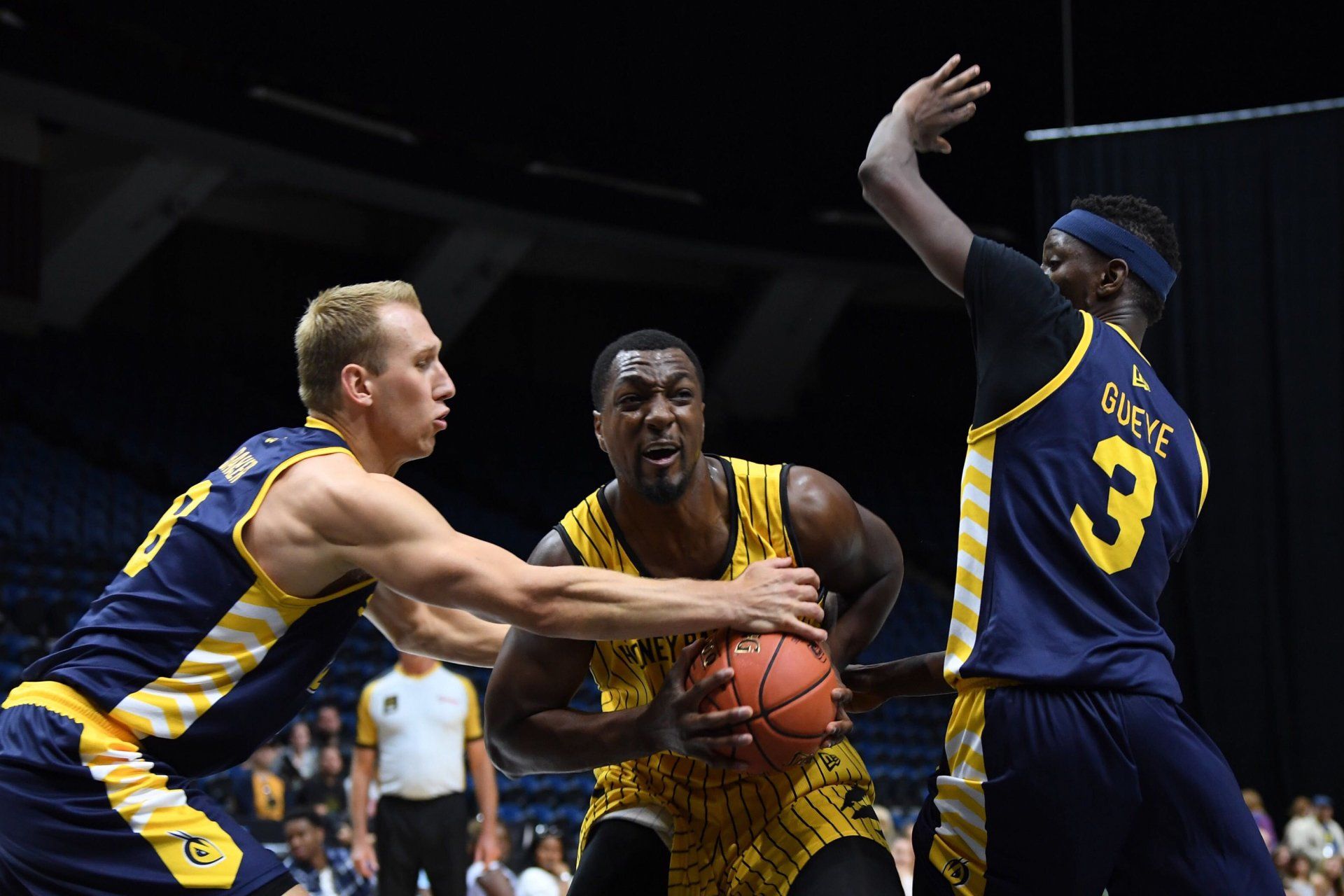CEBL Hitting the Right Notes in First Season
When the notion of the Canadian Elite Basketball League first surfaced last year I had a notion it was going to be a success.
I know many of the people involved at the highest levels – I count John Lashway of the Hamilton Honey Badgers as a long-time friend, I knew Mike Morreale was a solid, level-headed executive, I’ve known player personnel boss Joe Raso for decades – and that gave me great hope the league would be an important addition to the Canadian basketball scene.
I liked the idea of it staying small with just six teams with a heavy, heavy focus on Canadian players and coaches because that’s the way to attract homegrown talent that connects with the communities.
Sadly for me, it wasn’t until yesterday that I was able to actually get to a game – those dastardly Raptors and life kept me pretty busy these last few months – but seeing the Honey Badgers and Edmonton Stingers and talking to some people and asking questions, my initial thoughts seem to have been absolutely right.
It’s very good basketball – there were a handful of G Leaguers and top Euro pros and some intriguing kids in the game I saw -- and it’s well-coached, fast-paced under FIBA rules and well-played and, from the folks I talked to, everyone was enjoying themselves and it speaks to the entertainment value of a day or an evening out.
It draws okay, I’m told, but could be better, as every league could and I hope it does. I would say if any team did 2,500 or 3,000 a night that’d be great and in the right venue, 2,500 or 3,000 can seem like 20,000. If you’re in Hamilton or Guelph or St. Catharines or Abbotsford or Edmonton or Saskatoon, I think you should go see a game. Can’t imagine you’ll be sorry and the games are generally close, which all that truly matters, and the atmosphere’s big league and it’s a league that deserves some local support.
The game I saw was tremendous – Edmonton ended up winning 105-103 when Hamilton missed a buzzer-beating three – and I guarantee you everyone leaving would say they’d want to go back and see another game.
The league’s a singularly-owned entity, which is huge because no “partners” can try to pull a fast one on their fellow owners with financial shenanigans, the $7,000-per-team-per-game salary cap for 10-man rosters is fair and enforced and guys can make a good buck on a per-game basis for a 20-game season. Everything they are doing makes sense and seems to have the long-term growth of the game in mind and that’s important to me.
Sure, there have been some growing pains like coaches and general managers being replaced and rosters changing but that’s totally expected and, in the grand scheme of things, no big deal at all.
The most important thing, and I believe this to be true from various people I’ve spoken with over the last couple of months, is that there’s a connection between the franchises and their cities that’s important. The stuff around the game is like any game these days – music and noise and contests and in-game hosts – but have players in small cities who the fans already know from perhaps university or even high school days is a good way to build long-term loyalty.
No one’s going to get rich in a hurry and lurching from one crisis to another is silly and counter-productive. What’s important, and what works, is really laying down roots – Canadian roots – and it seems the league is doing that.
All six head coaches are Canadians with ties to a U SPORTS school, seven of every 10 players on each roster are Canadians, they have developmental program in place with the U SPORTS organization and many of the players have strong local ties.
That’s huge. And it’s the right way to go and I’m glad the league realizes that.
I’m sure when this season ends they’ll sit down and figure out what they could have and should have done differently or better but for a first year, things appear right on track.


